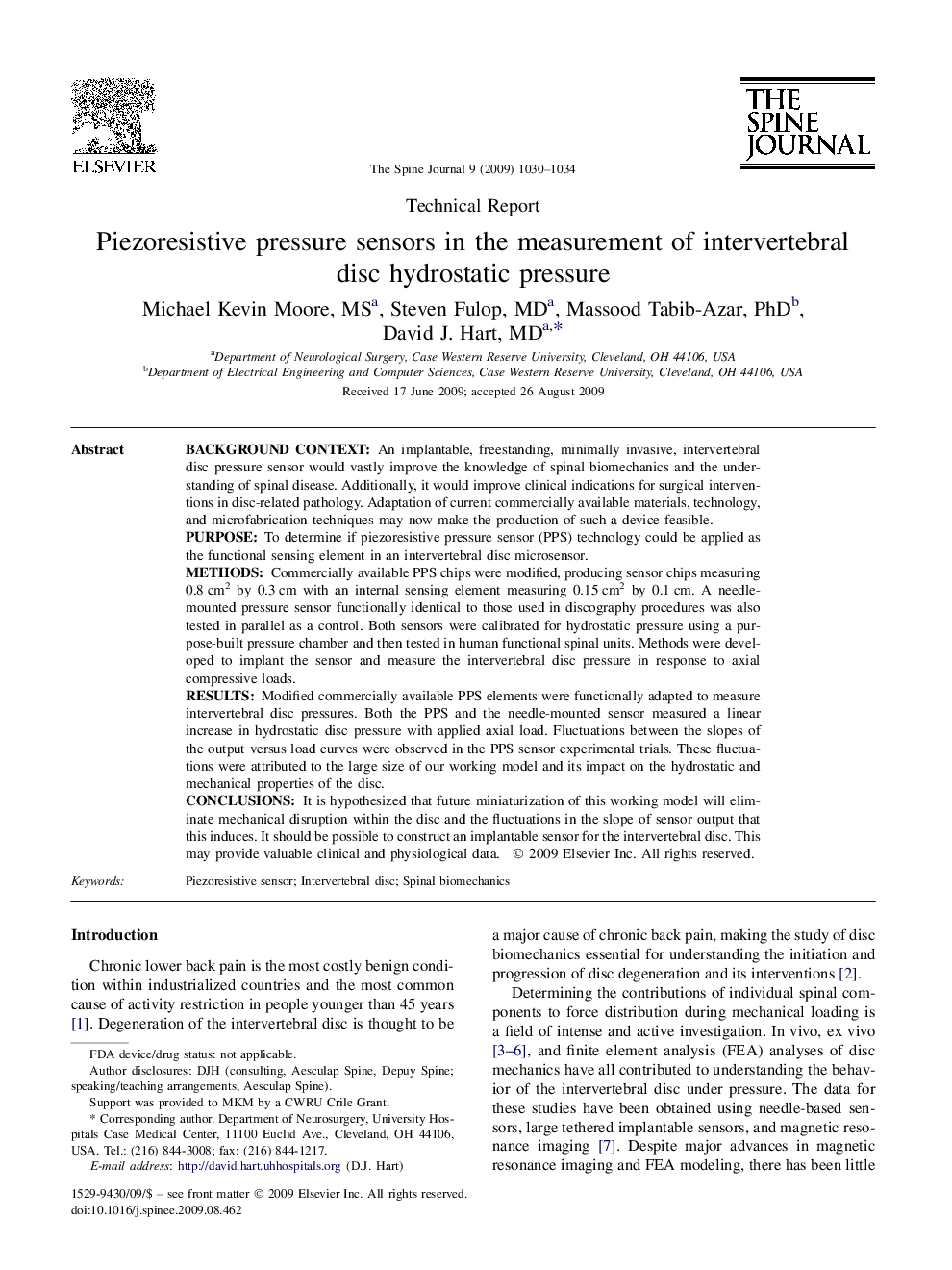| کد مقاله | کد نشریه | سال انتشار | مقاله انگلیسی | نسخه تمام متن |
|---|---|---|---|---|
| 4099314 | 1268636 | 2009 | 5 صفحه PDF | دانلود رایگان |

Background contextAn implantable, freestanding, minimally invasive, intervertebral disc pressure sensor would vastly improve the knowledge of spinal biomechanics and the understanding of spinal disease. Additionally, it would improve clinical indications for surgical interventions in disc-related pathology. Adaptation of current commercially available materials, technology, and microfabrication techniques may now make the production of such a device feasible.PurposeTo determine if piezoresistive pressure sensor (PPS) technology could be applied as the functional sensing element in an intervertebral disc microsensor.MethodsCommercially available PPS chips were modified, producing sensor chips measuring 0.8 cm2 by 0.3 cm with an internal sensing element measuring 0.15 cm2 by 0.1 cm. A needle-mounted pressure sensor functionally identical to those used in discography procedures was also tested in parallel as a control. Both sensors were calibrated for hydrostatic pressure using a purpose-built pressure chamber and then tested in human functional spinal units. Methods were developed to implant the sensor and measure the intervertebral disc pressure in response to axial compressive loads.ResultsModified commercially available PPS elements were functionally adapted to measure intervertebral disc pressures. Both the PPS and the needle-mounted sensor measured a linear increase in hydrostatic disc pressure with applied axial load. Fluctuations between the slopes of the output versus load curves were observed in the PPS sensor experimental trials. These fluctuations were attributed to the large size of our working model and its impact on the hydrostatic and mechanical properties of the disc.ConclusionsIt is hypothesized that future miniaturization of this working model will eliminate mechanical disruption within the disc and the fluctuations in the slope of sensor output that this induces. It should be possible to construct an implantable sensor for the intervertebral disc. This may provide valuable clinical and physiological data.
Journal: The Spine Journal - Volume 9, Issue 12, December 2009, Pages 1030–1034